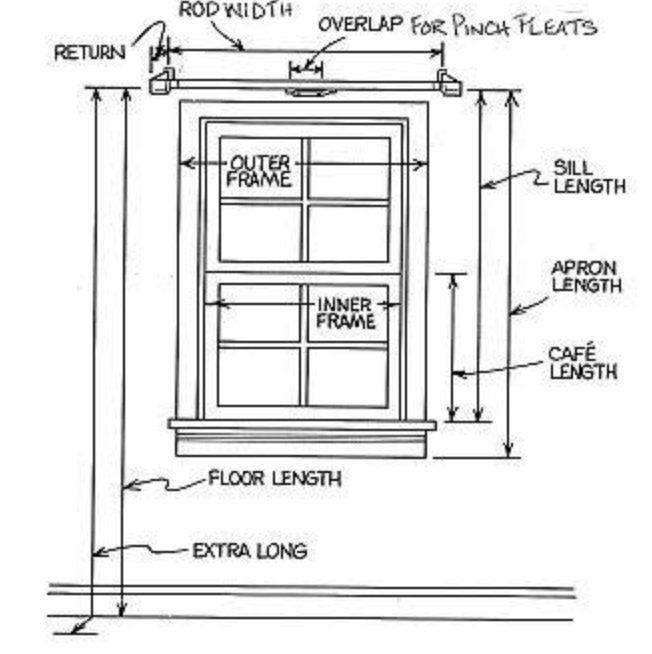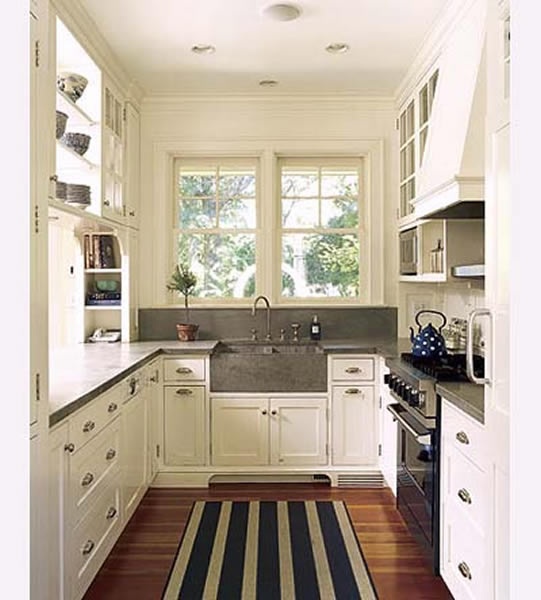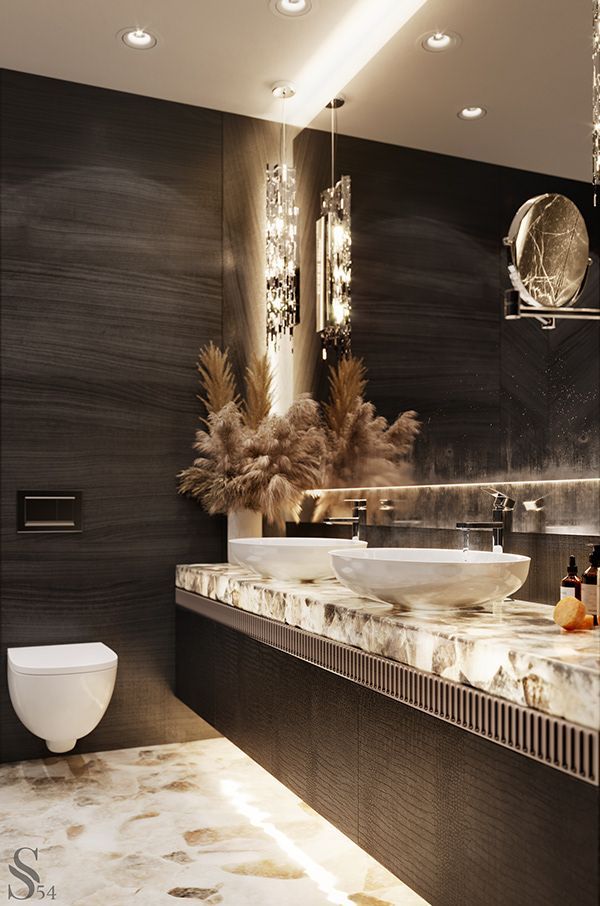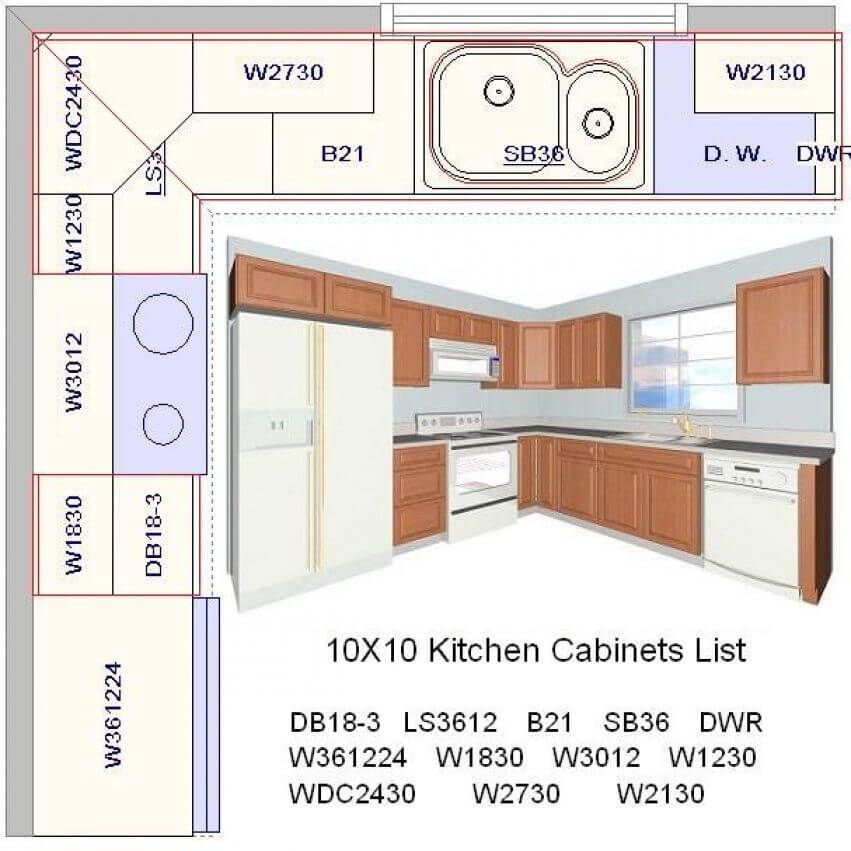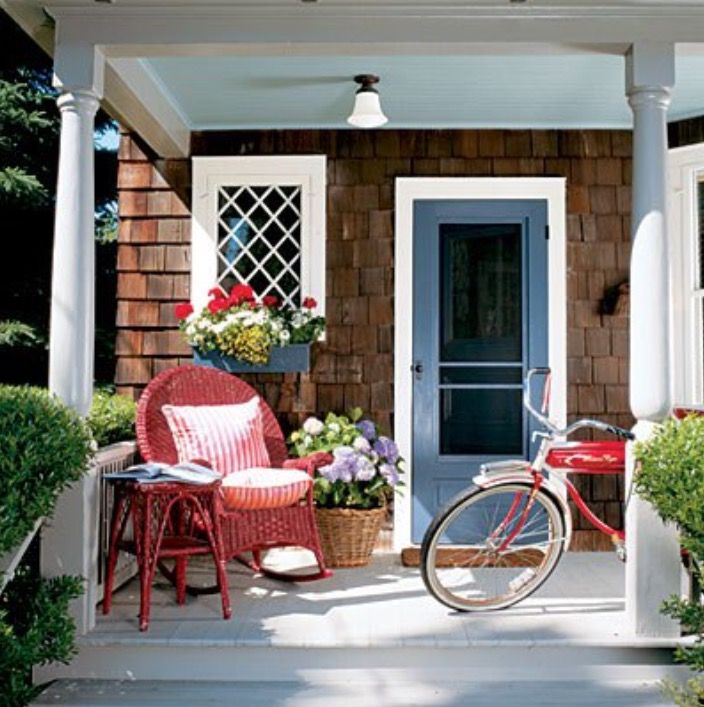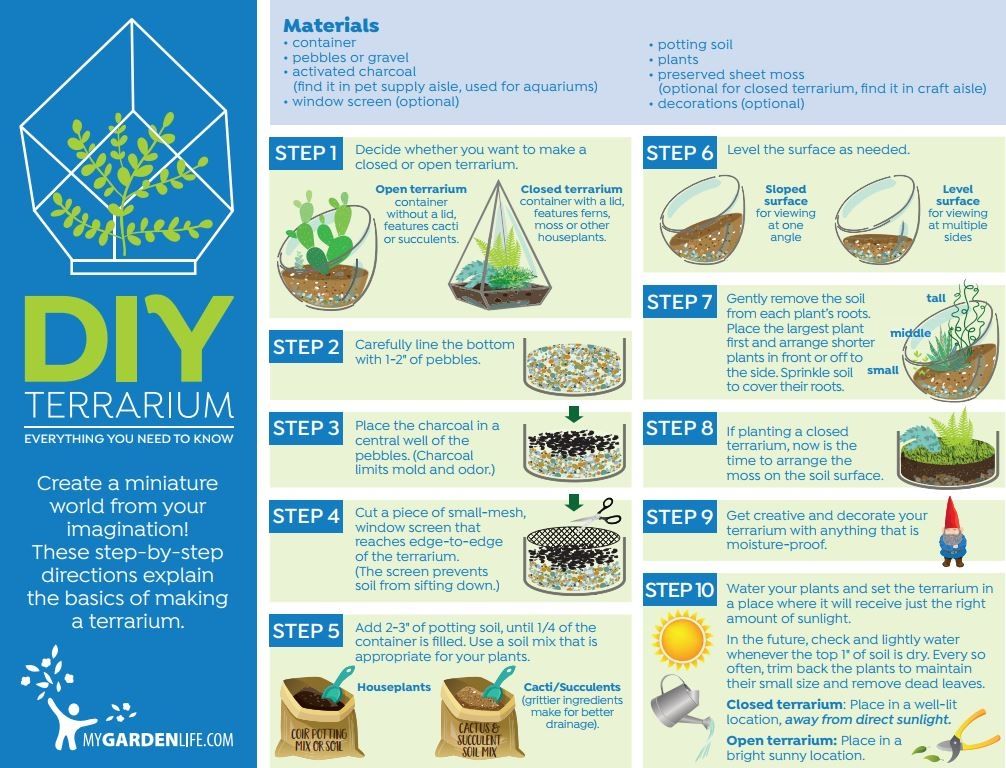How to measure for curtain length
How to Measure Curtain Length & Width for Accurate Sizes
In matters of custom drapery, size does matter. From grommet curtains to pinch pleat drapes, each style has its own nuances when it comes to measuring. Unless you know how to measure and specify accurate curtain sizes, your windows may look less than loved. To help our clients measure curtain sizes accurately for best possible look, our in-house stylists bring you a detailed guide on how to measure curtains. We hope the tips below will help you provide us with accurate specifications for your new curtains from Spiffy Spools. If you have any questions about sizing, please don’t hesitate to contact us at [email protected].
BEFORE YOU GET STARTED….SPIFFY TIP #1: For the most accurate measurements for curtain lengths and widths, use a steel tape measure. A fabric or plastic tape can stretch over time and will not provide the accurate reading you require to obtain perfect specifications.
SPIFFY TIP #2: Most fabric bolts come in standard widths of 54 inches. This means that most non-pinch pleat curtain panels more than 48 inches wide and pinch pleat panels more than 20 inches wide will have vertical joining hems to achieve the necessary width.
SPIFFY TIP #3: We do *not* require measurements for your windows, frames, poles or tracks. Instead, when ordering from Spiffy Spools, please enter the precise final sizes of the ready curtain panels you’d like us to stitch.
SPIFFY TIP #4: Prices on our site are per curtain panel, *NOT* per pair. To get a pair, please purchase 2 units.
SPIFFY TIP #5: “Length Fraction” in our specification form on ordering pages refers to ‘part inch’ measurements. For example, if you’d like to specify curtain length of 86.50 inches, please choose “86” under “Length” specification and “1/2″ (.50 inch)” under “Length Fraction” dropdown.
SPIFFY TIP #6: If you’re measuring for more than one window, measure each one individually – never assume that your windows are the same size, even if they may look alike.
When it comes to hanging curtains, there’s no room for error. Always double-check your measurements to make sure they’re correct, especially if you’re investing in custom tailored curtains!
Heading Style
Grommet Curtains (Eyelet Top)Tab Top, Back Tab Top & Rod Pocket TopRod Pocket Style with Header TopFlat Panel TopPencil Pleat CurtainsTie Top CurtainsPinch Pleat Curtains: All StylesGrommet Curtains
Length: For grommet curtains, measure from *top* of your curtain pole/rod to the desired endpoint. Then add 1.5 inches to this measurement. This should be the final length provided to us in your custom order specifications. The extra 1.5 inches added at the end is to account for the ‘upstand’ in grommet curtains – the part of the fabric that stands above the curtain rod. These steps will help you reach the perfect measurement for curtain lengths.
Spiffy Tip: “Length Fraction” in our curtain ordering pages refers to ‘part inch’ measurements. For example, if you’d like to order curtains that are 86.50 inches long, please choose “86” under the “Length” specification and “1/2″ (.50 inch)” under the “Length Fraction” dropdown.
For example, if you’d like to order curtains that are 86.50 inches long, please choose “86” under the “Length” specification and “1/2″ (.50 inch)” under the “Length Fraction” dropdown.
Width: While the width is a personal preference to some extent, our general guideline for grommet curtains is to order panels that are double the width of your curtain pole/track. For example, if your curtain pole is 36 inches wide, we suggest two panels of 36 inches *each*, and not two panels of 18 inches each. This will get you a luxurious fall/gather. If your drapery pole is 36 inches wide and you order curtain panels that are also 36 inches wide altogether, they will hang absolutely flat with no pleats or gather.
For a high level of fullness, order up to three times the width of the pole. If you are looking for less than average fullness and/or to economize on budget, 1.5 times should also be acceptable.
Up to three times width is also highly recommended for sheers and lightweight fabrics such as our linens. These fabrics have less body volume and therefore need more width to attain the same full look as fabrics such as cotton and polyesters. More width also helps enhance privacy where sheers are in use.
These fabrics have less body volume and therefore need more width to attain the same full look as fabrics such as cotton and polyesters. More width also helps enhance privacy where sheers are in use.
Spiffy Tip: Most fabric bolts come in standard widths of 54 inches. This means that all grommet top panels more than 48 inches wide will have vertical joining hems to achieve the extra specified width. These necessary seams are industry-standard and tend to ‘hide’ in pleats. However, if you’d like to avoid them, consider ordering multiple narrow panels over a pair of extra wide panels. READ MORE.
Tab Top, Back Tab Top & Rod Pocket Style Curtains
Length: For rod pocket top (without header frill), back tab top and tab top style drapery, measure length from *top* of your curtain pole/rod to the desired end point. This should be the final length provided to us in your custom order specifications.
Spiffy Tip: “Length Fraction” in our curtain ordering pages refers to ‘part inch’ measurements. For example, if you’d like to order curtains that are 86.50 inches long, please choose “86” under “Length” specification and “1/2″ (.50 inch)” under “Length Fraction” dropdown.
For example, if you’d like to order curtains that are 86.50 inches long, please choose “86” under “Length” specification and “1/2″ (.50 inch)” under “Length Fraction” dropdown.
Width: While width is a personal preference to some extent, our general guideline for tab top, back tab top and rod pocket curtains is to order panels that are double the width of your curtain pole/track. For example, if your curtain pole is 36 inches wide, we suggest two panels of 36 inches *each*, and not two panels of 18 inches each. This will get you a rich fall/gather. If your drapery pole is 36 inches wide and you order curtain panels that are also 36 inches wide altogether, they will hang absolutely flat with no pleats or gather.
If you are looking for less than average fullness and/or to economize on budget, 1.5 times should also be acceptable.
While we recommend 3x fullness for an opulent look in rod pocket style, we do not recommend more than 2x fullness for tab tops and back tab tops as the tabs restrict ‘bunching’ of fabric somewhat at top and therefore panels do not gather as neatly with too much width.
Spiffy Tip: Most fabric bolts come in standard widths of 54 inches. This means that all curtain panels in these styles, if more than 48 inches wide, will have vertical joining hems to achieve the extra specified width. These necessary seams are industry-standard and tend to ‘hide’ in pleats. However, if you’d like to avoid them, consider ordering multiple narrow panels over a pair of extra wide panels. READ MORE.
Rod Pocket Style with Header Top
Length: For rod pocket tops with a header frill, measure length from *top* of your curtain pole/rod to the desired end point. Add 1.5 inch to this number to account for a 1.5 inch header frill on top. This should be the final length provided to us in your custom order specifications.
Spiffy Tip: “Length Fraction” in our curtain ordering pages refers to ‘part inch’ measurements. For example, if you’d like to order curtains that are 86.50 inches long, please choose “86” under “Length” specification and “1/2″ (. 50 inch)” under “Length Fraction” dropdown.
50 inch)” under “Length Fraction” dropdown.
Width: While width is a personal preference to some extent, our general guideline for rod pocket curtains is to order panels that are double the width of your curtain pole/track. For example, if your curtain pole is 36 inches wide, we suggest two panels of 36 inches *each*, and not two panels of 18 inches each. This will get you luxurious fall/gather. If your drapery pole is 36 inches wide and you order curtain panels that are also 36 inches wide altogether, they will hang absolutely flat with no pleats or gather.
For high level of fullness, order up to three times the width of pole. If you are looking for less than average fullness and/or to economize on budget, 1.5 times should also be acceptable.
Up to three times width is also highly recommended for sheers and lightweight fabrics such as our linens. These fabrics have less body volume and therefore need more width to attain the same full look as fabrics such as cottons and polyesters.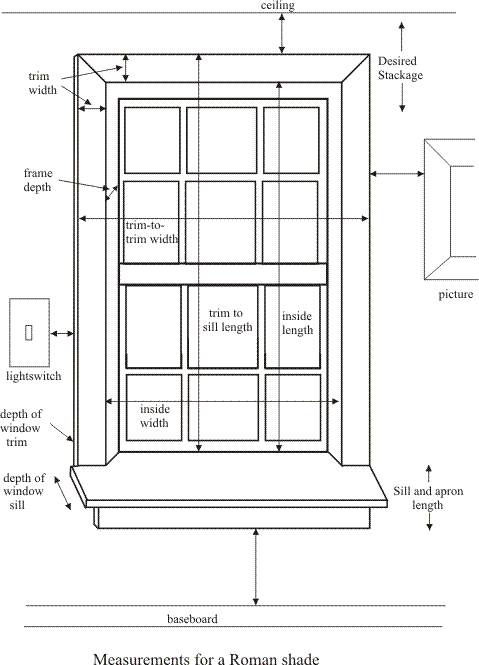 More width also helps enhance privacy where sheers are in use.
More width also helps enhance privacy where sheers are in use.
Spiffy Tip: Most fabric bolts come in standard widths of 54 inches. This means that all rod pocket panels more than 48 inches wide will have vertical joining hems to achieve the extra specified width. These necessary seams are industry-standard and tend to ‘hide’ in pleats. However, if you’d like to avoid them, consider ordering multiple narrow panels over a pair of extra wide panels. READ MORE.
Flat Panel Top Curtains
Length: Flat panel drapery is hung using either drapery pins that are inserted in the header tape at back, or with curtain clips that are pinched on the top hem.
For flat panels to be mounted with drapery pin and hook mechanism on a track, length should be measured from the top of the track up to the desired endpoint. This will allow for length to cover and hide the track itself. If you’d like your track to be visible, measure from the bottom of track to the desired endpoint.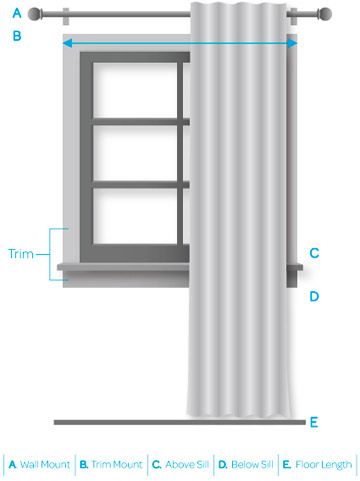 If hanging on a pole, length should be measured from the underside/bottom of the pole.
If hanging on a pole, length should be measured from the underside/bottom of the pole.
For panels to be hung with curtain clips, measure length from the *bottom* of the curtain clip to the desired end point. This should be the final length provided to us in your custom order specifications.
In summary, to some extent, the final length of drapery for a flat panel top is determined by personal preference. Clients measure lengths based on whether they want their hardware to ve visible or hidden by the fabric.
The header tape we sew at back of flat panel tops is 4 inches wide. It allows for drapery pins to be inserted at three different points, offering clients some flexibility to adjust the final mount position at time of installation.
Spiffy Tip: “Length Fraction” in our curtain ordering pages refers to ‘part inch’ measurements. For example, if you’d like to order curtains that are 86.50 inches long, please choose “86” under “Length” specification and “1/2″ (. 50 inch)” under “Length Fraction” dropdown.
50 inch)” under “Length Fraction” dropdown.
Width: Most clients ordering clip tops tend to favor a somewhat flatter look for their drapery with less than average gather/fullness. Therefore by default, most customers order panels that are 1.5 times the width of their curtain rod/pole. For example, for a curtain pole/window that is 36 inches wide, two panels of 27 inches *each* would give a less than average fullness yet a nice clean look for this style.
That said, we recommend ordering two times the pole width (two panels of 36 inches *each* for a 36 inch pole for example) if you want a good, standard level of gather. And up to three times (two panels of 54 inches *each* for a 36 inch pole for example) for an opulent look.
We also recommend a relatively higher width (2-3 times the pole width) if ordering sheers or lightweight fabrics such as our linens. These fabrics have low body volume and therefore need more panel width to achieve the same full gather and enhance privacy.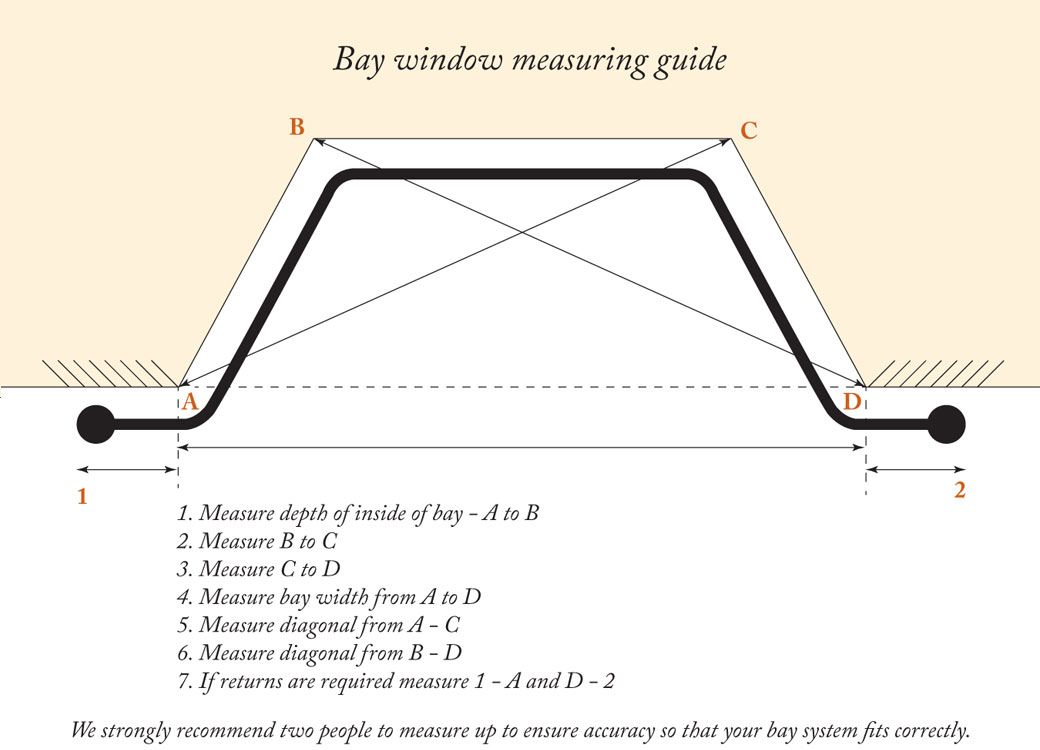
Please be careful to *not* order two panels of 18 inches each for a 36 inch pole for example. With these specifications, the curtains will hang flat like a sheet with no pleats or gather at all.
Spiffy Tip: Most fabric bolts come in standard widths of 54 inches. This means that all flat panel top curtain panels more than 48 inches wide will have vertical joining hems to achieve the extra specified width. These necessary seams are industry-standard and tend to ‘hide’ in pleats. However, if you’d like to avoid them, consider ordering multiple narrow panels over a pair of extra wide panels. READ MORE.
Pencil Pleat Curtains
Length: Pencil pleat curtains can be hung from either a track or a pole with drapery pin and hook mechanism. If hanging from a track, length should be measured from the top of the track up to the desired endpoint. This will allow for the fabric to cover/hide the track itself. If you’d like your track to be visible, measure from the bottom of the track to the endpoint.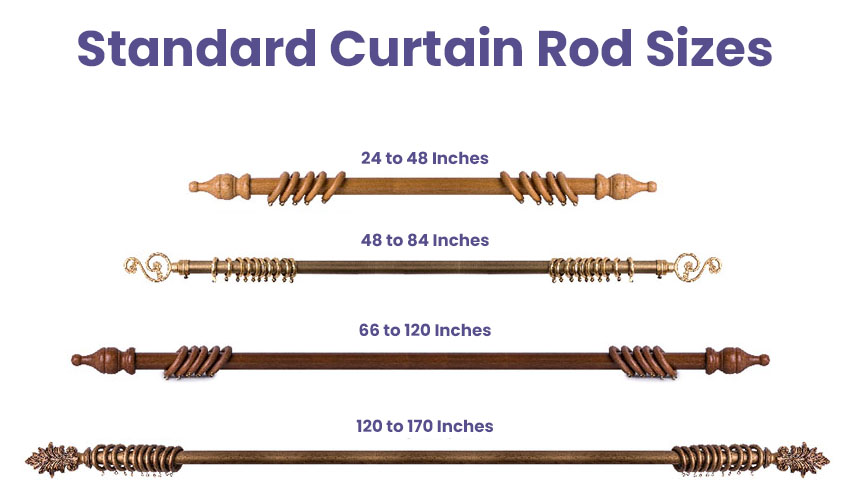
If you are hanging your pencil pleat curtains from a pole, length should be measured from the underside/bottom of the pole. Or wherever you’d ideally like the top edge of the panel to sit.
Spiffy Tip: “Length Fraction” in our curtain ordering pages refers to ‘part inch’ measurements. For example, if you’d like to order curtains that are 86.50 inches long, please choose “86” under “Length” specification and “1/2″ (.50 inch)” under “Length Fraction” dropdown.
Width: While width is a personal preference to some extent, our general guideline for pencil pleat curtains is to order panels that are double the width of your curtain pole/track. For example, if your curtain pole is 36 inches wide, we suggest two panels of 36 inches *each*, not two panels of 18 inches each. This will get you a luxurious fall/gather. If your drapery pole is 36 inches wide and you order curtain panels that are also 36 inches wide altogether, they will hang absolutely flat with no pleats or gather.
For high level of fullness, order up to three times the width of pole. If you are looking for less than average fullness and/or to economize on budget, 1.5 times should also be acceptable.
Up to three times width is also highly recommended for sheers and lightweight fabrics such as our linens. These fabrics have less body volume and therefore need more panel width to attain the same full look as fabrics such as cottons and polyesters. More width also helps enhance privacy where sheers are in use.
Spiffy Tip: Most fabric bolts come in standard widths of 54 inches. This means that all pencil pleat curtain panels more than 48 inches wide will have vertical joining hems to achieve the extra specified width. These necessary seams are industry-standard and tend to ‘hide’ in pleats. However, if you’d like to avoid them, consider ordering multiple narrow panels over a pair of extra wide panels. READ MORE.
Tie Top Curtains
Length: Our tie top curtains are stitched with 10 inches long ties on the top.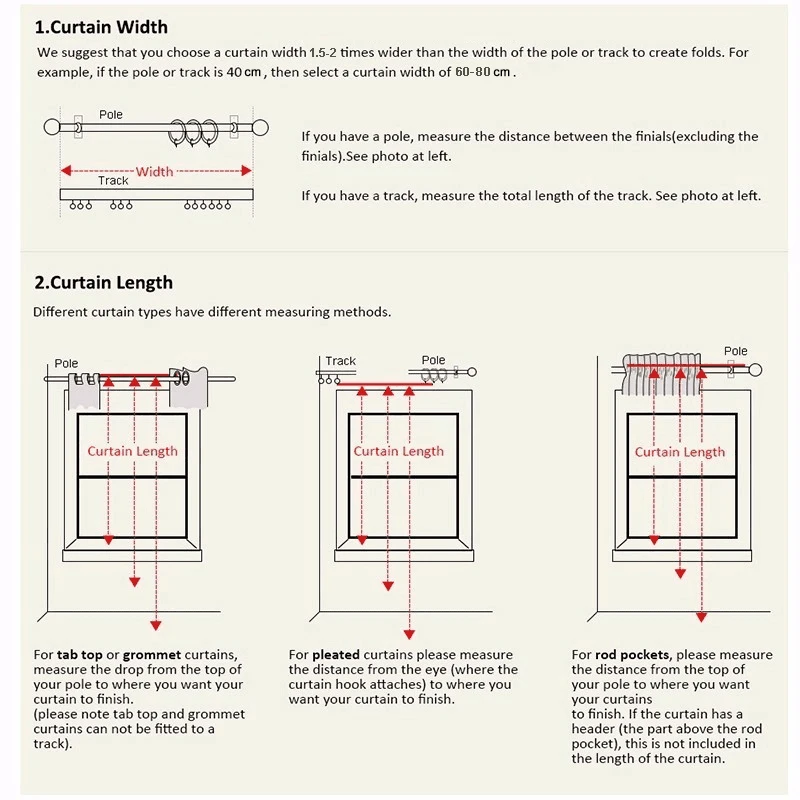 Length specifications for this style are somewhat determined by how much of the tie top loop you’d like to be visible and hang below the pole/rod. The curtain panel length should therefore be measured from the point where you’d like the panel drop to start up to the desired endpoint.
Length specifications for this style are somewhat determined by how much of the tie top loop you’d like to be visible and hang below the pole/rod. The curtain panel length should therefore be measured from the point where you’d like the panel drop to start up to the desired endpoint.
Spiffy Tip: “Length Fraction” in our curtain ordering pages refers to ‘part inch’ measurements. For example, if you’d like to order curtains that are 86.50 inches long, please choose “86” under “Length” specification and “1/2″ (.50 inch)” under “Length Fraction” dropdown.
Width: Most clients ordering tie tops tend to favor a somewhat flatter look for their drapery with less than average gather/fullness. Therefore by default, most customers order panels that are 1.5 times the width of their curtain rod/pole. For example, for a curtain pole/window that is 36 inches wide, two panels of 27 inches *each* would give a less than average fullness yet a nice clean look for this style.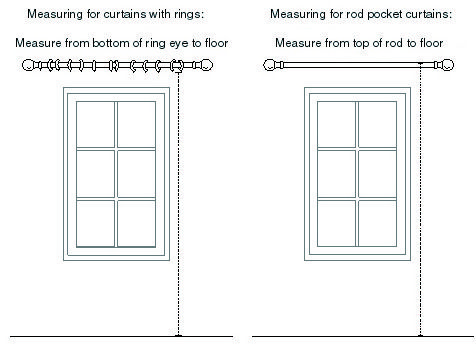
That said, we recommend ordering two times the pole width (two panels of 36 inches *each* for a 36 inch pole for example) if you want a good, standard level of gather. And up to three times (two panels of 54 inches *each* for a 36 inch pole for example) for an opulent look.
We also recommend a relatively higher width (2-3 times the pole width) if ordering sheers or lightweight fabrics such as our linens. These fabrics have low body volume and therefore need more panel width to achieve the same full gather and enhance privacy.
Please be careful to *not* order two panels of 18 inches each for a 36 inch pole for example. With these specifications, the curtains will hang flat like a sheet with no pleats or gather at all.
Spiffy Tip: Most fabric bolts come in standard widths of 54 inches. This means that all tie top curtain panels more than 48 inches wide will have vertical joining hems to achieve the extra specified width. These necessary seams are industry-standard and tend to ‘hide’ in pleats.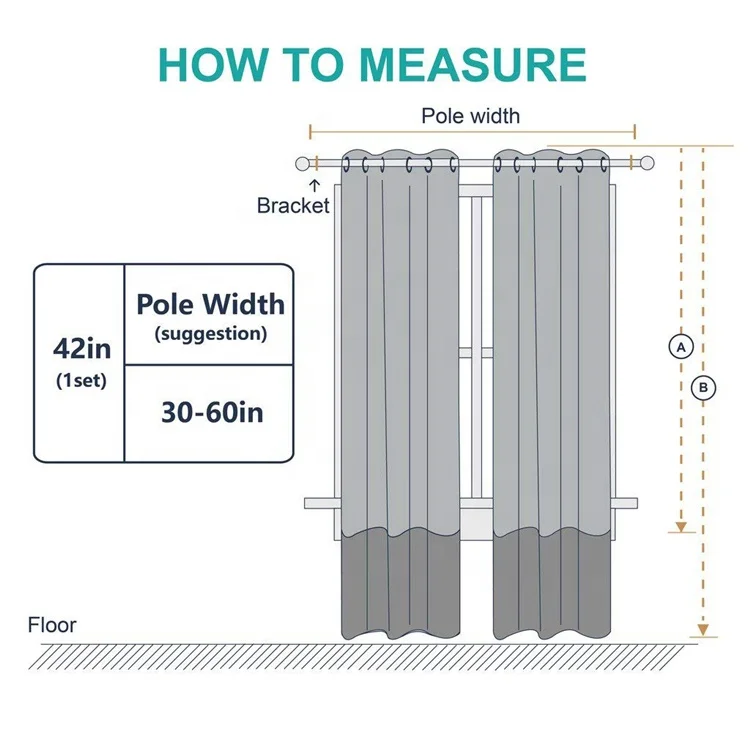 However, if you’d like to avoid them, consider ordering multiple narrow panels over a pair of extra wide panels. READ MORE.
However, if you’d like to avoid them, consider ordering multiple narrow panels over a pair of extra wide panels. READ MORE.
Pinch Pleat Curtains: All Styles
Length: All pinch pleat styles on offer can be hung from either a track or a pole with drapery pin and hook mechanism. If hanging from a track, length should be measured from the top of the track up to the desired endpoint. This will allow for fabric to cover/hide the track itself. If you’d like your track to be visible, measure from the bottom of the track to the endpoint.
If you are hanging your pinch pleat curtains from a pole, length should be measured from the underside/bottom of the pole. Or wherever you’d ideally like the top edge of the panel to sit.
In summary, to some extent, the exact final length of pinch pleat drapery is determined by your personal preference – whether you’d like your hardware to show or not, and where you’d like the top edge of drapery panel to sit/start.
Spiffy Tip: “Length Fraction” in our curtain ordering pages refers to ‘part inch’ measurements. For example, if you’d like to order curtains that are 86.50 inches long, please choose “86” under “Length” specification and “1/2″ (.50 inch)” under “Length Fraction” dropdown.
Width: Measure width of your curtain pole/track. Add 7-10 inches to this measurement. This should be the final width of your panels *altogether* in a pair. For example, to cover a pole of width 70 inches, we recommend total panel width of 77-80 inches. Then depending on whether you are looking for a single wide panel or a pair, you can either order one panel that is about 80 inches wide or two panels of 40 inches each.
Since these are ‘fixed’ headings (the pleats are pre-sewn into the panels by hand, made to a fixed width that cannot be loosened), it is important to measure the track/pole width accurately when ordering any of the pinch pleat styles. This will allow us to gather your curtains to the correct width.
Spiffy Tip: Most fabric bolts come in standard widths of 54 inches. This means that all pinch pleat panels more than 20 inches wide will have vertical joining hems to achieve the extra specified width. These necessary seams are industry-standard and tend to ‘hide’ in pleats. However, if you’d like to avoid them, consider ordering multiple narrow panels over a pair of extra wide panels. READ MORE.
Hiya!
If your desired size or style of window treatments is not available on our site ready for purchase, we’re happy to offer a price estimate via email. Please submit the form below and we’ll send you your quote within 24 hours. For multiple windows, please submit multiple forms. Or simply write to us at [email protected] with your specifications.
Happy draping!
[contact-form-7 404 "Not Found"]
X
5% Off
Next Time
Almost!
Get Samples Free!
No Prize
No Luck Today
10% Off
No Prize :(
Hard Luck!
15% Off
Not Your Day
So Close!
SPIN TO WIN!
Enter your email address and spin the wheel. This is your chance to win spiffy discounts!
This is your chance to win spiffy discounts!
How to measure for curtains: easy steps for a perfect finish
(Image credit: Molly Rose Photography)
It’s crucial to know how to measure for curtains to achieve a beautiful drape, and a stylish result. Curtains create an attractive window dressing with a look that can be as opulent or simple as you prefer.
Curtains may be sized to open during the day and cover the window for complete privacy and coziness at night, or to gently diffuse the light all day long, or they may be decorative panels that hang at the sides of the window.
However, whichever curtain ideas you go for, the right fit is crucial. Curtains that aren’t wide enough won’t show the fabric to its best advantage, and those that aren’t long enough can look old-fashioned.
This is how to measure for curtains – one of the most elegant of window treatment ideas.
How to measure for curtains
(Image credit: Adrian Briscoe)
Key to the process of how to measure for curtains is accuracy, and it’s essential to have a steel tape measure because fabric versions can stretch resulting in incorrect measurements. You might also need a step ladder, as well as somewhere to record the measurements.
You might also need a step ladder, as well as somewhere to record the measurements.
Curtains are available in standard lengths, of course, but our guide applies to custom curtains. If you do need to invest in standard curtains as a short-term fix, you’ll frequently find 63, 84, 94, 108, and 120 inch lengths (and in the UK often 137, 182, 228, and 274cm). Always opt for a longer rather than shorter curtain length if you are using these and they don’t match your measurements.
1. Consider curtain length
(Image credit: Emma Lee)
First consider curtain types. Generally curtains should be floor length or longer for best effect. That’s even the case if they hang behind furniture as they should never look less than generous. Floor-length curtains are often preferred for living rooms, while those that puddle on the floor can be a good complement to a formal dining room, for example, and you might want to choose them for a bedroom, too. If you do want curtains that puddle on the floor, you can add between 1 and up to as much as 12 inches for a truly lavish look.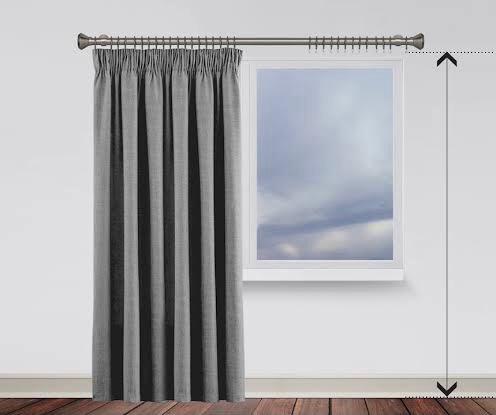
Do bear in mind that curtains that puddle on the floor aren’t easy to open and close, so are best for dressing windows rather than creating privacy. They’re more inclined to gather dust, too, so do need more maintenance.
Curtains that finish at the window sill can be appropriate for a kitchen, for instance, where they’ll look awkward in living spaces and bedrooms.
2. Decide on the position of the curtain rod
(Image credit: Thomas Sanderson)
Curtains should, in general, be hung both higher and wider than the window. The reason? The window will feel bigger, but it will also allow maximum light into the room. With the curtains open, all the glass will be exposed and the room brighter.
If you still need to control the light coming into the room when the curtains are open, hang a shade inside the window that complements the curtains.
Usually, you hang curtains with a rod, but you can hang curtains without a rod, too. If you are hanging them with one, plan to position the curtain rod around 8 to 10 inches (20 to 25cm) above the window and so that it extends around 10 to 12 inches (25 to 30cm) on each side of the window.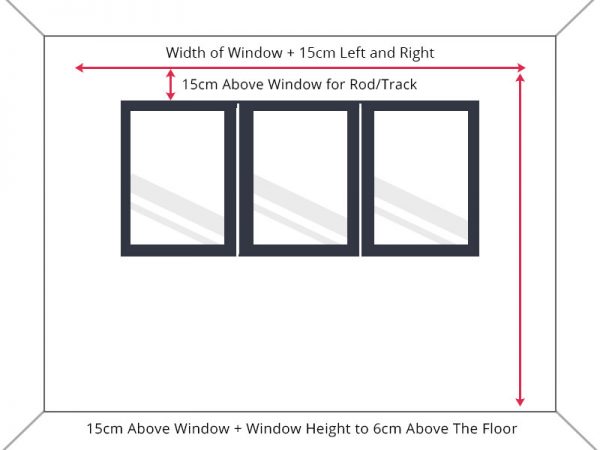 In a room with very high ceilings, you could place the rod some 12 to 24 inches (30 to 61cm) above the window, or fix it just below the crown molding.
In a room with very high ceilings, you could place the rod some 12 to 24 inches (30 to 61cm) above the window, or fix it just below the crown molding.
3. Measure the length of the curtains
(Image credit: Molly Mahon)
How to measure for curtains like an interior designer? First of all, bear in mind that you should always take several measurements of the length to allow for flooring that isn’t completely level.
Measure from the top of the rod to three-eighths of an inch (1cm) above the floor for floor-length curtains. Another 1 to 3 inches (2.5 to 8cm) added to the length will brush the floor, while an extravagant puddle requires adding 6 to 12 inches (15 to 30cm) to the rod to floor distance.
4. Measure the width of the curtains
(Image credit: VSP interiors)
Knowing how to measure for curtains includes being savvy about their width. This is the case for all curtains that close to cover the entire window, but decorative panels are different as they simply frame it.
Measure the total length of the curtain rod between finials to supply to your tailor. Custom-made drapes will have the correct fullness according to their type, which can be between 1.5 and three times the width of the pole.
How do you measure what size curtains you need?
To measure the size of curtains you need, first calculate the width you will need, using the length of the pole or track to get a measurement, not the window, since the curtain will pull back beyond the edges of the frame. Now double the measurement you took; this will give you nicely gathered curtains that suit pencil pleat, eyelet and tab top curtains. To measure the length, decide first whether you want the curtains to drape on the floor, graze the floor or sit at window sill level. Then use the top of the track or pole to measure from top to bottom.
How do I know what size curtains to buy?
If you’ve discovered how to measure for curtains and are opting for standard curtains, be aware that the width will be the first measurement stated, followed by the length. Curtains may be sold as a single panel, and therefore you will need more than one for a wider window.
Curtains may be sold as a single panel, and therefore you will need more than one for a wider window.
Use the width of the curtain rod, and be aware that you will need to multiply this width to get the correct fullness. Otherwise? The curtains will hang flat, which isn’t desirable. Use 1.5 times the width as the minimum, but two times will look more generous, while three times is recommended for sheers and linens.
Side panel curtains don’t close across the window but instead frame it as well as making it look wider than it really is. In this case, you can simply choose the panel width you prefer.
How much wider should curtains be than the window
Curtains should be two to two and a half times wider than the window. This is because curtains should be able to be pulled back beyond the window frame on either side to let plenty of light into the room and to exaggerate the window's proportions, but still look full when pulled across.
How wide should curtains be for 36 inch window?
For a 36 inch window, you need curtains with a finished width at least 1.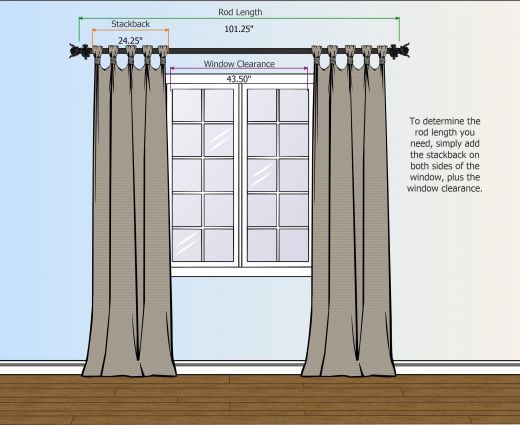 5 times that, but better are those with twice that width and even three times the width for sheers.
5 times that, but better are those with twice that width and even three times the width for sheers.
Therefore, for a 36 inch window, you need two panels of 36 inches each for twice the width and a luxurious gather.
How wide should curtains be for a 60 inch window?
For a 60 inch window, you need curtains with a finished width at least 1.5 times that, but better are those with twice that width and even three times the width for sheers.
Therefore, for a 60 inch window, you need two panels of 60 inches each for twice the width and a luxurious gather.
How wide should curtains be for a 72 inch window?
For a 72 inch window, you need curtains with a finished width at least 1.5 times that, but better are those with twice that width and even three times the width for sheers.
Therefore, for a 72 inch window, you need two panels of 72 inches each for twice the width and a luxurious gather.
How wide should curtains be for 120 inch window?
For a 120 inch window, you need curtains with a finished width at least 1. 5 times that, but better are those with twice that width and even three times the width for sheers.
Therefore, for a 120 inch window, you need two panels of 120 inches each for twice the width and a luxurious gather.
Is the curtain width for one curtain?
The curtain width for one window should be one and a half times the width of the window in total; in other words, each curtain will be three quarters the total width of the window.
Sarah is a freelance journalist and editor. Previously executive editor of Ideal Home, she’s specialized in interiors, property and gardens for over 20 years, and covers interior design, house design, gardens, and cleaning and organizing a home for H&G. She’s written for websites, including Houzz, Channel 4’s flagship website, 4Homes, and Future’s T3; national newspapers, including The Guardian; and magazines including Future’s Country Homes & Interiors, Homebuilding & Renovating, Period Living, and Style at Home, as well as House Beautiful, Good Homes, Grand Designs, Homes & Antiques, LandLove and The English Home among others.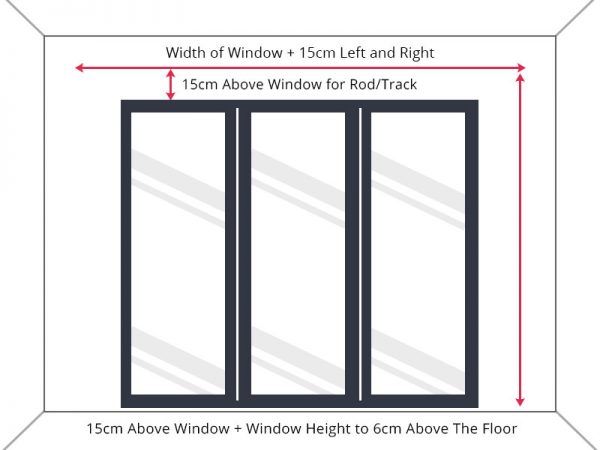 It’s no big surprise that she likes to put what she writes about into practice, and is a serial house renovator.
It’s no big surprise that she likes to put what she writes about into practice, and is a serial house renovator.
How to measure the height of curtains for tailoring?
The first step to a successful transformation of your room is the correct measurement of the decoration of the window opening. It is from the combination and proportions of tulle and curtains that the harmonious appearance of the living room, study, bedroom, nursery or kitchen depends. As a rule, short curtains (roller blinds, Roman blinds, pleated blinds, blinds, short tulle) are chosen for the kitchen and nursery. For bedrooms, living rooms, guest rooms - floor-length curtains with appropriate accessories. It is necessary to measure the height of the curtains, armed with a rigid tape measure, which, in comparison with a fabric-based centimeter, is more accurate. So, first things first.
- Ceiling cornices for curtains are usually made from wall to wall, decorative - 30-50 centimeters more than the window opening.

- Once you have decided on the width of your curtain, you need to keep visually appealing proportions in mind. If the curtains are attached to the tape, we multiply the length of the cornice by 2 (the optimal assembly factor for the curtain tape) and we get the ideal width of the curtain, taking into account the drapery. If the curtains are mounted on hinges or eyelets - multiply by 1.5.
- Length to window sill. Such a curtain looks better in the nursery or in the kitchen, which is also dictated by the practical aspect. The length of the curtain should be 1.5-2 centimeters higher than the window sill, or have a figured edge in the form of an arch.
- The length below the window sill is appropriate in the nursery, kitchen, country house rooms. The length should be 10-15 centimeters below the window sill for an aesthetically pleasing look.
- Floor-length will add a chic touch to any room in your home. As a rule, such curtains should be 1.5-3 centimeters above the floor.
 This will allow the curtains not to rub or get dirty in daily use, which will prolong the beauty of the product.
This will allow the curtains not to rub or get dirty in daily use, which will prolong the beauty of the product. - Curtains lying on the floor. This technique looks spectacular in romantic bedrooms, using light tulle as an example, or in modern / classic living rooms, where expensive, high-quality fabrics are used. It is better that the edge of the curtain rests on the floor with a "margin" of 15-20 centimeters.
- When buying fabric, remember that the height of the curtain that you have calculated with all your care is not the length of the fabric you need to purchase. Add +7-10 centimeters to the measurements to process the bottom and top of the future curtain (depending on the style).
- Repeating curtains must be measured according to the length of the pattern itself, which will allow the pattern to be arranged as aesthetically as possible.
- If for you curtains are not only an aesthetic element of the room's decoration, but also protection from the sun's rays, you need to calculate the width of the curtain so that when closing, one half of the curtain overlaps the second for optimal protection.
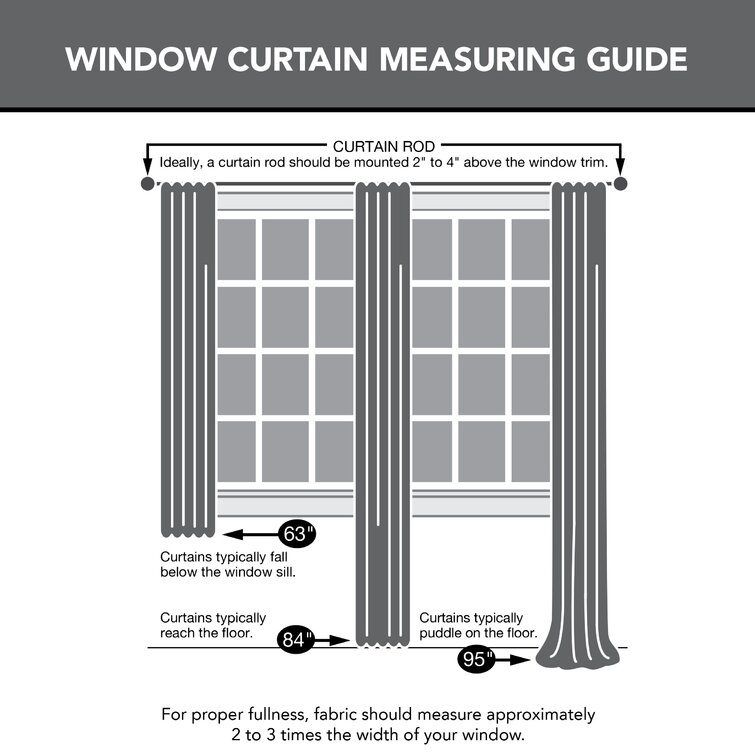
- If you want to decorate the composition of window decoration with waves, lambrequins, massive drapery, you should trust the calculation of fabric costs only to a professional.
Remember that even a mistake of 2-3 centimeters can spoil the appearance of the finished composition. Therefore, it will not be superfluous to order the measurement of curtains at home in Moscow, which gives a 100% guarantee of accuracy and compliance, which is confirmed by numerous reviews. Departure of the designer will help you not only choose fabrics for curtains, but also correctly design the silhouette of your window opening, choose patterns, textures, accessories. Depending on the style of the room, the designer will prompt and advise you on innovative solutions or classic forms that you will definitely like.
How to measure the height of curtains for tailoring? | Home textiles for curtains in Moscow
The most popular mistakes made by people who decide to sew curtains on their own are typical for many.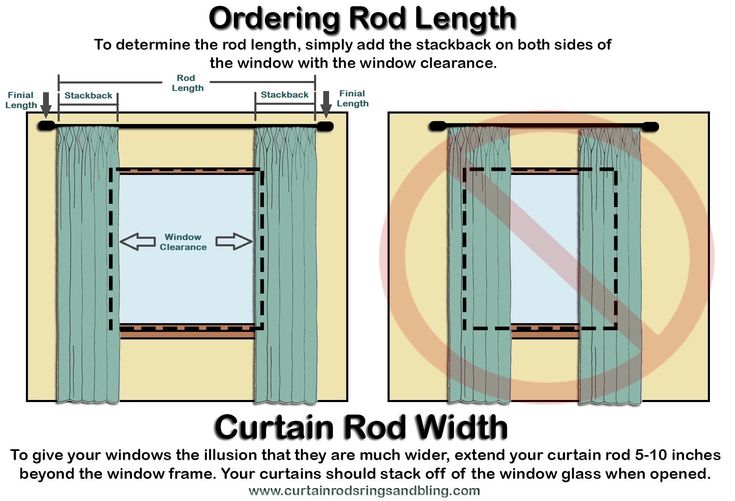 Among them are the following:
Among them are the following:
- Calculation of the height without taking into account the hem;
- Ill-conceived place for fixing the curtain tape;
- Incorrect pattern cutting: width directions are used instead of height;
- The shrinkage error after the first wash is not taken into account.
Visually, the errors in space look like this:
- Too long bottom, which inaccurately falls to the floor;
- Visually even sheet across the width of the window without folds, with the exception of the Roman shade;
- Disproportionately selected window height;
- The edge of the curtain ends at the window sill (according to the rules, it must fall at least 10–15 cm).
Such errors not only visually spoil the overall perception of the interior idea, but are also impractical: constant contact with the window sill and the floor will provoke the formation of dirty areas, moisture can get on the edge during cleaning, or you can simply step on it.
How is the margin for hinges calculated? As a rule, curtain tape is used, and due to the fact that it has several parallel lines, it is possible to choose the desired height in the future. Decide on the degree of tension, which depends on the density of the fabric and its size, and measure the length of the buttonhole. Some curtains are fixed with an air loop made of a similar fabric, in this case the length of the loop is calculated individually and depends on the position of the cornice, the distance between the cornice and the window opening. If you use metal fixing clothespins, then it is enough to make a margin of no more than 1–1.5 cm.
Do I need to wash the product before first use?
Experts and interior designers agree that curtain and curtain fabric should be washed and ironed (if possible, steamed in a vertical even position) before sewing according to the specified parameters, and only then begin cutting and sewing. Therefore, when buying a material, it is necessary to take into account the shrinkage for processing.
The importance of the preliminary design
In order not to make mistakes in the calculations, it is recommended to initially draw a detailed design and visualize all the details. Before that, it is recommended to make measurements of the following parameters:
- Height and width of the window opening;
- Height to window sill when closed;
- Maximum width, which is calculated as the length of the cornice plus the number of gathers desired;
- Maximum finished product length.
If you combine several textures and fabrics, then the size of each fabric is calculated separately, and then the overall calculation of the entire composition is made. In the case of a multi-tiered hemming of fragments, the calculation takes place according to the fabric on which the curtain tape or air hanging loops are sewn.
Do not neglect the rule of preliminary visual design, because even a few incorrectly calculated centimeters can visually ruin the finished look.